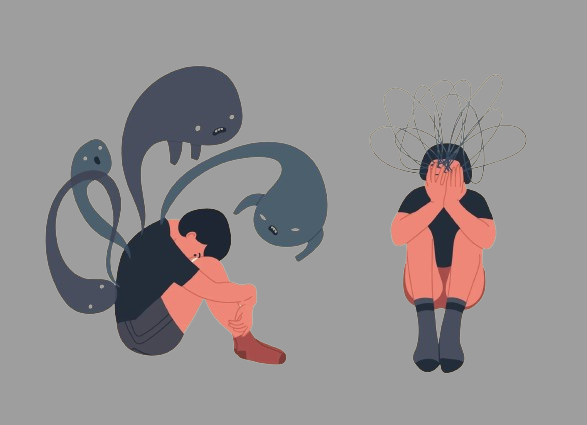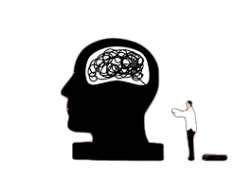Introduction
Have you ever spent night after night staring at the ceiling, your mind refusing to quiet down while the world around you sleeps? For many, this isn’t just an occasional restless night—it’s a condition known as chronic insomnia. When sleeplessness becomes a long-term struggle, it can affect every part of life—from mood and energy to work performance and emotional health.

In medical terms, doctors and healthcare systems use standardized codes to classify disorders. For chronic insomnia, that classification comes from the ICD-10 (International Classification of Diseases, 10th Revision). Understanding what this code means helps doctors communicate clearly, ensure accurate diagnoses, and plan better treatment strategies.
This guide breaks down chronic insomnia in everyday language while exploring how it’s defined in ICD-10, how it differs from similar codes, and what you can do if you live with this condition.
What Is Chronic Insomnia According to ICD-10?
In the simplest terms, chronic insomnia is a long-lasting difficulty in falling asleep, staying asleep, or getting good-quality rest—even when you have the chance to sleep.
The ICD-10 defines insomnia as a disorder that isn’t just about a few bad nights. It becomes chronic when the sleep problem occurs at least three nights a week for three months or more, leading to distress or impaired daily functioning.
In ICD-10, chronic insomnia falls under two main categories:
- F51.01 – Nonorganic Insomnia (psychological origin)
- G47.00 – Insomnia, Unspecified (organic or physiological origin)
The difference lies in what’s causing the insomnia—whether it’s related to mental and emotional factors (nonorganic) or physical conditions (organic).
How Chronic Insomnia Is Classified in ICD-10
The ICD-10 system classifies diseases and conditions by using specific alphanumeric codes so that medical professionals around the world can communicate effectively.
For insomnia, there are two primary groups:
- F codes (F51.0) – Nonorganic sleep disorders, including insomnia caused by emotional or psychological issues.
- G codes (G47.0) – Organic sleep disorders, where insomnia stems from a medical or physiological condition.
So, if a person’s insomnia is due to anxiety, stress, or depression, it often falls under F51.0. But if it’s due to a medical condition like chronic pain or neurological disease, it might be coded under G47.0.
This classification helps healthcare providers decide how to approach treatment—whether to focus more on mental health therapy or physical management.
What Is the Difference Between G47 and F51?
This is one of the most common questions about sleep disorder coding, and understanding it can make things much clearer.
| Code | Category | Type of Cause | Example |
|---|---|---|---|
| F51.0 (Nonorganic Insomnia) | Mental & Behavioral Disorders | Psychological, emotional, or stress-related factors | Anxiety-related sleeplessness |
| G47.0 (Organic Insomnia) | Diseases of the Nervous System | Physical, neurological, or medical causes | Insomnia from chronic pain or hormonal imbalance |
In short:
- F51 codes are used when mental or behavioral issues are the root cause.
- G47 codes are used when physical or neurological factors are responsible.
This difference may seem small, but it’s crucial for accurate diagnosis and insurance coding. It helps determine whether the patient needs psychiatric therapy, medical treatment, or both.
What Is Lifelong Insomnia Called?
When insomnia starts early in life and persists for many years, it’s often referred to as lifelong insomnia or primary insomnia.
This type of insomnia isn’t triggered by another health condition or substance—it’s essentially a long-term pattern of difficulty sleeping that becomes part of a person’s natural sleep behavior.
In clinical terms, lifelong or primary insomnia is coded under:
- F51.01 – Primary Insomnia
These individuals usually have consistent sleep difficulties from childhood or adolescence, unrelated to anxiety, depression, or physical illness. It’s considered idiopathic, meaning the exact cause isn’t clearly understood.
What Is the ICD-10 Code for R29.6?
The code R29.6 in ICD-10 doesn’t actually represent insomnia—it refers to Repeated Falls.
It’s often associated with neurological or balance issues rather than sleep disorders. However, this question appears frequently because people often come across “R” codes while researching ICD classifications for health symptoms.
To clarify:
- R29.6 = Repeated Falls (not related to insomnia)
- F51.0 or G47.0 = Insomnia-related codes
So, if you’re looking for coding linked specifically to sleep issues, R29.6 isn’t relevant. Stick with F51.0 or G47.0 when referring to chronic insomnia.
What Is the Difference Between Primary Insomnia and Chronic Insomnia?
The terms primary insomnia and chronic insomnia are often used interchangeably, but there’s a subtle difference.
| Feature | Primary Insomnia | Chronic Insomnia |
|---|---|---|
| Definition | Difficulty sleeping not caused by any medical or psychiatric condition | Long-term sleep difficulty that may or may not have an identifiable cause |
| Duration | Can be lifelong | Lasts at least 3 months |
| Causes | No clear reason (idiopathic) | Stress, health problems, medications, or lifestyle factors |
| ICD-10 Code | F51.01 | F51.0 / G47.0 |
In short, primary insomnia is usually lifelong and idiopathic, while chronic insomnia can develop later in life due to ongoing stress or other contributing factors.
Causes and Risk Factors of Chronic Insomnia
Chronic insomnia doesn’t appear overnight—it’s often a result of several interconnected issues. Common causes include:
- Stress and anxiety – The most frequent trigger; your mind simply won’t switch off.
- Depression or mood disorders – Emotional imbalance can disrupt sleep cycles.
- Chronic pain – Physical discomfort prevents deep, restorative sleep.
- Shift work – Irregular schedules disturb your body clock.
- Substance use – Caffeine, nicotine, or alcohol can interfere with sleep patterns.
- Medical conditions – Thyroid disorders, neurological issues, or respiratory problems.
- Poor sleep habits – Inconsistent bedtime routines or too much screen time before bed.
Risk increases with age, stress exposure, and certain personality traits like perfectionism or overthinking.
Symptoms and Diagnostic Criteria
To diagnose chronic insomnia, doctors look for the following symptoms:
- Trouble falling asleep (taking more than 30 minutes)
- Waking frequently during the night
- Waking too early and being unable to fall back asleep
- Feeling tired even after a full night in bed
- Daytime fatigue, irritability, or poor focus
- Sleep problems persisting for at least three nights per week for three months or more
Diagnosis involves ruling out other medical or psychiatric conditions that might cause similar symptoms.
How Doctors Diagnose Chronic Insomnia (ICD-10 Coding Perspective)
Doctors use ICD-10 codes to record diagnoses accurately for medical records, treatment, and insurance.
The steps generally include:
- Clinical Interview: Asking about sleep patterns, habits, and emotional state.
- Sleep Diary: Recording bedtime, wake time, and nighttime awakenings.
- Polysomnography (Sleep Study): Conducted in severe or unclear cases.
- ICD-10 Classification:
- F51.0 → If insomnia stems from stress, anxiety, or mental causes.
- G47.0 → If insomnia has a medical or neurological cause.
Accurate coding ensures that the treatment plan matches the underlying cause—psychological therapy for F51 cases and medical management for G47 cases.
Management and Treatment Approaches
Managing chronic insomnia usually involves both behavioral and medical strategies:
Non-Medical Treatments:
- Cognitive Behavioral Therapy for Insomnia (CBT-I) – Teaches new sleep habits and thought patterns.
- Relaxation Techniques – Deep breathing, mindfulness, progressive muscle relaxation.
- Sleep Hygiene – Setting a regular sleep schedule, limiting caffeine, and creating a dark, quiet room.
Medical Treatments:
- Short-term medications like melatonin or prescribed sleep aids (under doctor supervision).
- Treating underlying conditions – such as depression, anxiety, or pain.
- Lifestyle changes – Avoiding heavy meals before bedtime, reducing alcohol, and exercising regularly.
Doctors often start with non-medical therapies before turning to medications, as behavioral changes tend to have longer-lasting results.
Psychological and Lifestyle Interventions
Mental well-being and daily habits play a major role in sleep quality.
Helpful strategies include:
- Regular sleep-wake cycles (even on weekends).
- Journaling or stress management before bedtime.
- Reducing screen time at least an hour before sleep.
- Engaging in relaxing evening activities like reading or light stretching.
Mind-body practices like yoga, meditation, and tai chi also help reduce stress hormones that interfere with sleep.
Long-Term Impact and Prevention
Untreated chronic insomnia can have wide-reaching consequences. It increases the risk of:
- Heart disease
- Depression and anxiety
- Weight gain and diabetes
- Cognitive decline
- Weakened immune function
To prevent chronic insomnia:
- Stick to consistent sleep patterns
- Manage stress early
- Avoid using alcohol or screens as sleep aids
- Create a relaxing nighttime routine
Early intervention can prevent occasional insomnia from becoming chronic.
When to Seek Professional Help
You should consider seeing a doctor if:
- Your sleep issues persist for more than a month
- Fatigue or irritability affect your work or relationships
- You rely on medication or alcohol to fall asleep
- You experience other symptoms like snoring, nightmares, or anxiety attacks
Doctors can determine if your insomnia fits the ICD-10 criteria and recommend appropriate therapy or medication.
Summary and Final Thoughts
Chronic insomnia is more than just missing sleep—it’s a long-term condition that affects the mind, body, and emotional balance. Understanding its ICD-10 codes (F51.0 and G47.0) helps clarify the root cause, whether psychological or medical.
While it may seem daunting, effective treatments exist—from CBT-I therapy and stress management to medication and lifestyle adjustments. The key is early recognition, accurate diagnosis, and a commitment to long-term self-care.
So, if sleepless nights have become your norm, don’t ignore them. Talk to a healthcare professional, understand your ICD-10 classification, and take the first step toward healthier, restorative sleep



